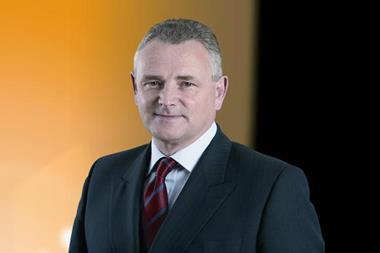As Solvency II draws ever nearer, we listen in as some of the industry’s most powerful figures discuss the changing regulatory landscape
Chief executives Brendan McManus from Willis and Lex Baugh from AIG were just two of an elite group that joined Insurance Times for the IBM Leaders Forum lunch last month.
Some of the key points up for discussion included concerns about the high capital requirements, the onus of using AAA bonds to discount some liabilities, the ‘low’ 40% cap on reinsurance recovery, the absence of pensions from the regulation’s scope and opposition to the use of hybrid capital (issues containing shares and debt).
The event kicked off with ABI director of financial regulation and taxation Peter Vipond updating executives on the latest developments at the heart of Europe.
He said: “The UK is only one supervisor of 27 members of CEIOPS [the Committee of European Insurance and Occupational Pensions Supervisors].
“Although it is the most important, the biggest and most sophisticated, it is still only one. It has been unable to get its way in a number of key votes and key issues, and that will be true again.
“We need to think about this, in terms of what is going on in Europe more generally.”
Vipond said Solvency II represented a real challenge. “Certainly, firms sitting round this table are looking at these issues, thinking about how they build their models for 2012, and how they have to have them up and running long before then.”
Offering an insurer’s point of view, Lex Baugh said: “Solvency II means much greater transparency in terms of financial stability of individual players in the market.
“These changes, with the more conservative stance that has been taken by CEIOPS, and the refinements that are coming out, are certainly threatening what could have been capital advantages.
“So it is taking away some of the upside. But I think there is a very important gain in terms of a company getting its house in order and performing on the basis of the new standard.”
European landscape
Vipond said that the use of models to test a firm’s capital strength was prevalent in the UK, but not so much in Europe.
He said: “There is a fascinating issue of British versus continental firms. In the UK, there are about 100 firms – companies in general insurance and life – that will use models.
“That is the overwhelming bulk of the market. In most continental economies, it is a minority; in Germany, you are talking about 14 firms … that sort of number. In France, it has been much more limited. There is not the tradition of modelling.”
The event’s chairman, Insurance Times editor Tom Broughton, asked if there were any insurance companies leading the way on Solvency II.
IBM associate partner of insurance strategic business solutions John Smith said Zurich was “best in class” at present. “It’s a consequence of when they started the journey and, more importantly, the underlying factors that drove their decision to change.
“It was really a desire to have an end-to-end view of information across the organisation.”
Smith warned that insurers dragging their feet in implementing Solvency II would pay a high price. He said the skilled staff needed – such as lawyers and actuaries – were already snapped up, leaving a dearth of talent for companies that got their act together late in the day.
“The talent has gone – not going, it’s gone.
“If you’re looking for the heavy lifters to help you on this journey, especially on the Pillar 1 side, in the models, actuarial talent has dried up,” he said.
The problem could be remedied, but it would cost a lot more in staff costs.
Delegates then asked Vipond to describe what he was seeing across the European landscape.
He raised some smiles when he joked that it was a great time to be an actuary. “It grieves me to say but it’s a very good time to be an actuary again. It is certainly true that there is shortage of people with specialist modelling skills and that is reflected in the pricing.”
Vipond agreed with Smith that the talent pool was drying up and that insurers should not sit on the sidelines.
Aon chief financial officer Mark Chessher said: “For the international groups, which see Solvency II as a European quirk, then it becomes something that you do, rather than something you take on as an opportunity for your business.”
McManus said that the “really interesting aspect” of Solvency II is how it would affect clients. “I suspect the impact will probably be less cover and more price. We’re doing it at the same time as investment returns are down. Yet we have still not hit the hard market – and there’s no sign of one coming soon.”
McManus asked Vipond whether the creators of Solvency II had considered the effect it would have on clients.
Vipond replied: “There is a danger we could end up with a system that the regulators feel comfortable with; one that is very smooth, well-capitalised and suits their purpose, but is actually very old-fashioned. The people who pay for that are clients and, just as importantly, shareholders.”
He said that future “pinch points” could be in areas such as employers’ liability.
“I can see the price of that rising quite sharply. Whereas with some of the more retail-type products, the costs are not going to be the capital, but doing the systems and compliance, and delivering as an industry.”
Allianz head of market management and communications Philipp Cremer said the “whole ethos” behind Solvency II was not to create a tough regulatory structure but to improve the performance of firms.
“I see this primarily driven by business reasons. It makes good business sense to work in a branch structure. It creates one global company, strong identification of employees in all branch offices of one company, and simplifies the management on one balance sheet. I have never have seen it driven primarily by regulatory considerations.”
Risk management
Vipond then gave an interesting insight into a cultural shift on risk management.
He said the trend was to appoint chief risk officers, even though they could come into conflict with the role of the chief underwriter.
“When I used to work on trading books with banks, the people who did trading book calculations were a small, very clever group of people who had no influence on the overall bank whatsoever. The bank knew what they were doing, but it had no real kind of interface except in a crisis.
“That is changing a lot, and one area where you would see that in insurance is the growth in the number of chief risk officers.
“There are big debates about whether they should report to the chief executive officer or chief financial officer. But the point is that you have somebody with a risk function.
“And that is quite a change for general insurance, where it was the chief underwriter who was in charge of the business. And still rightly is.
“But it is quite difficult when you bring in a risk manager. Are they challenging the underwriter? Working out that sort of thing has been a continuing issue for the general insurance business.”
Vipond said that in the past, risk management had been left to the “mathematical brains” in companies. But Solvency II had helped senior management to understand the importance of risk and how it should be managed.
"The risk management process is not just about the very mathematical process, it is about embedding a risk framework.
“I think that the Enhanced Capital Requirement has helped a bit with that, because it has obliged senior management to get into the business of looking at risk … not just looking at something on the margins.” IT




































No comments yet